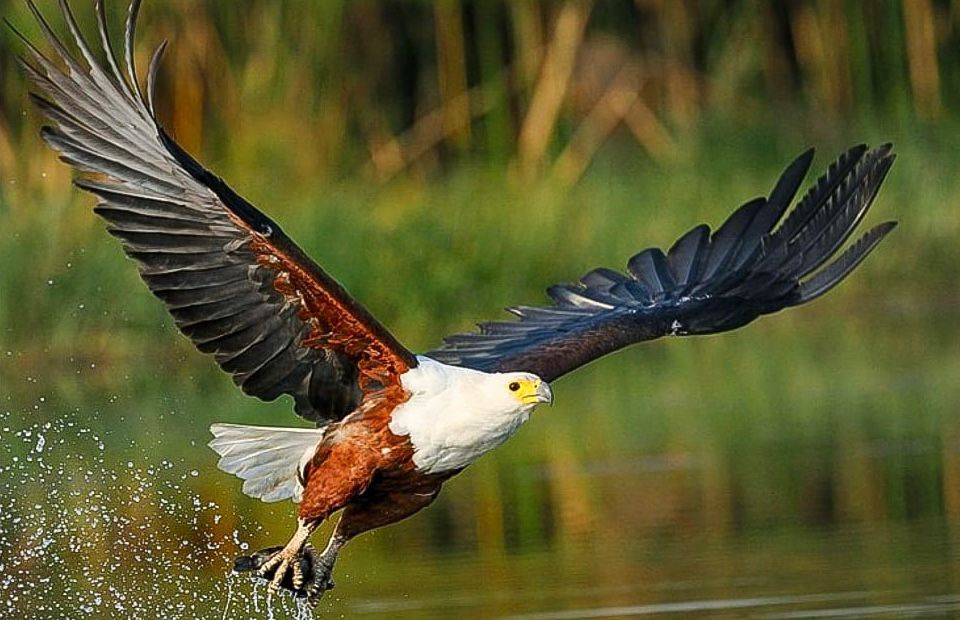
It is a very special moment each morning to be woken by the call of the African Fish Eagle (Haliaeetus vocifer), especially as Chitwa is situated on a large body of water, which these birds use as hunting grounds.
The Chitwa dam has much to offer the fish eagle and the normal resident wildlife. The call of the African Fish Eagle is very distinctive, a synonymous sound with the African landscape. It cannot be confused with any other call from our local feathered friends. Such is its endearment and appeal to mankind that I have occasionally faultered in shopping malls for a brief second only to identify the origin of this call from the adjacent cell phone user. Yes, you can download its call as your preferred ringtone. The Kingfisher ringtones are also easy listening.
The appearance of a mature Fish Eagle is also distinct; its colouration not allowing it to be confused with another species, even a novice bird watcher can tick the checklist with absolute confidence.
They are usually seen in pairs, thought to mate for life, the female can be told apart from the male as she is the larger and has a larger white breast patch. Their breeding season occurs during the drier months. A nest is constructed from dry twigs, mostly built in the fork of a tree, but can also be on a rocky ledge and always close to water.

Between 1 and 3 eggs are laid. Juvenile Fish Eagles may take as long as five years to achieve full adult plumage.
Diet preference for Fish Eagles (no surprises) is fish. An important hunting aspect for Fish Eagles is the size of the catch. Smaller fry with a mass of less than 2kgs are plucked from the water with specially adapted powerful talons (adaptations called “spiricules” found on the toes), ideal for catching slippery prey, and airlifted to a nearby tree for feeding on. Fish weighing between 2 and 3 kgs are either planed along the water surface to the nearest shore or swum ashore as Fish Eagles are able to do a butterfly-type stroke using their wings as paddles. These larger prey items are eaten on the ground. Established pairs share their meals with each other.
The conservation status of Fish Eagles is categorized as “Least Concern” by IUCN. Fish Eagles are represented in reasonably large numbers in sub-Saharan Africa. They are adaptable and enjoy a range of habitats from open water bodies in grasslands to rivers, swamps, marshes and even estuaries.
Ten more interesting facts about Fish Eagles:
- Zambia and Zimbabwe have adopted the Fish Eagle as their national birds.
- It appears on the Namibian Coat of Arms.
- Fish Eagles belong to the same genus (Haliaeetos) as sea eagles.
- Females can weigh as much as 1kg more than males.
- The firstborn chick kills its younger siblings, a term called siblicide.
- Fish Eagles also scavenge meals, stealing from other birds, a term called kleptoparasitism.
- It is related to the North American Bald Eagle.
- It has a different call when close to its nest compared to its trade mark call is in flight or when perched.
- Lungfish and catfish are most commonly caught.
- Home ranges can vary considerably in size, depending on food availability
- A closing yarn about Fish Eagles is the belief of some fishing guides in remote fishing waters is that resident Fish Eagles deserve the first catch of the day. By offering them your first catch, you will be rewarded with a successful day’s fishing and the Fish Eagles will respect all your subsequent catches with their crops full.